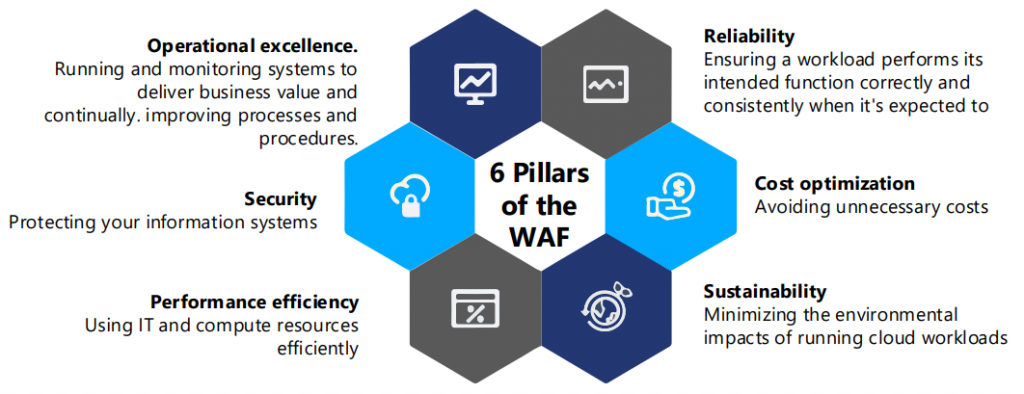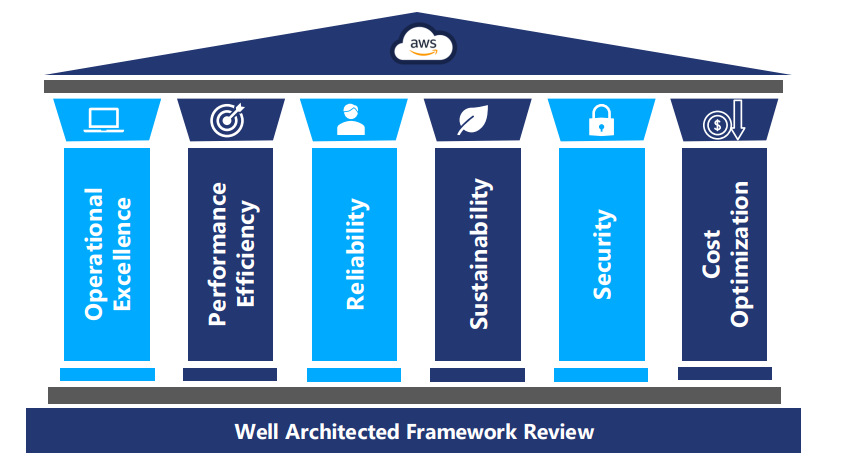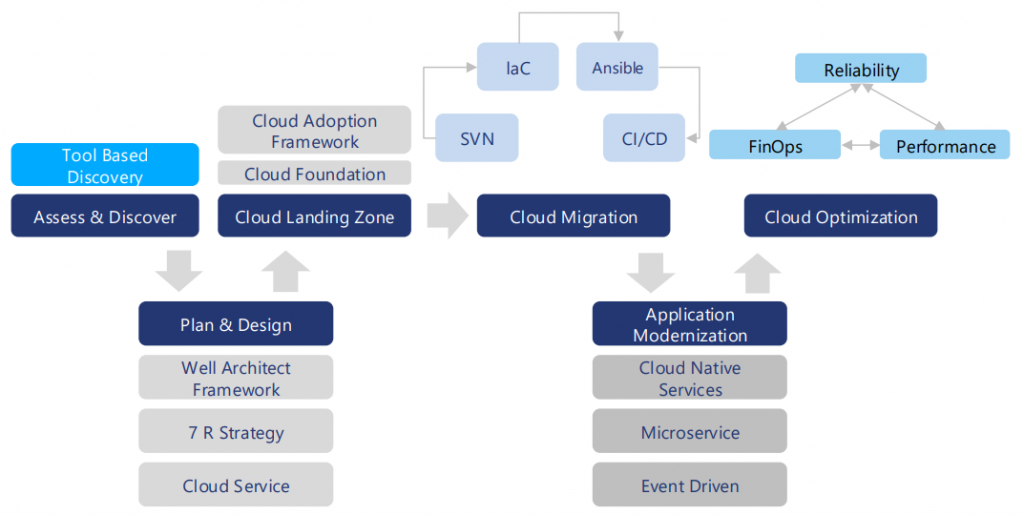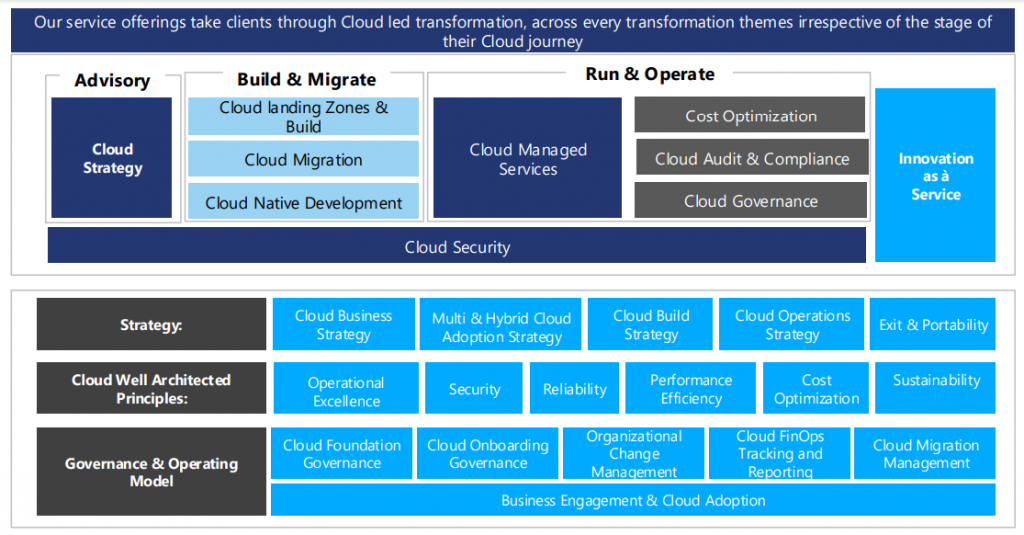overview
Thriving in the Cloud Boom
In 2022, the global cloud computing market was valued at $446.51 billion, and by 2023 it had reached $500 billion. Projections suggest that this market will grow to over $1 trillion by 2028 and $1.6 trillion by 2030. According to Gartner, worldwide spending on public cloud services is expected to increase by 20.4% in 2024, reaching $675.4 billion. This growth is primarily driven by generative AI (GenAI) and application modernization.
The BFSI (Banking, Financial Services, and Insurance) market alone was estimated at $56.15 billion in 2022, and it is expected to surge to around $230.15 billion by 2032, with a compound annual growth rate (CAGR) of 15.2% during the forecast period from 2023 to 2032.
Going Beyond Lift-and-Shift
Most enterprises begin their cloud journey by using infrastructure as a service (IaaS) to “lift and shift” some of their existing applications to the cloud. While this approach helps build initial experience, it is crucial for enterprises looking to exit datacenters and adopt cloud for the long term to develop a cloud strategy that incorporates “cloud-native” services. Achieving cloud maturity through this progression is essential to fully harness the transformative power of the cloud. Without this advancement, the cloud’s potential to revolutionize business and technology will remain underutilized.
Assessment and Discovery for Cloud Migration
For a successful large-scale enterprise cloud migration, conducting a thorough Assessment and Discovery of the current landscape is essential. This step ensures cloud viability and readiness, and it defines the migration strategy, including whether to migrate first and then transform, or transform first and then migrate.
Building the Foundation Right
Enterprises must adopt a forward-thinking approach to building the right cloud foundation. This involves planning and designing cloud architecture, selecting the appropriate Cloud Service Provider, and establishing robust guardrails for Cloud Governance.
Key to this process is implementing Well-Architected Framework (WAF), establishing landing zones, and enabling highly automated delivery to ensure a secure, scalable, and optimized cloud environment.
The Well-Architected Framework (WAF), endorsed by major Cloud Service Providers (AWS, Azure, GCP), provides best practices for designing and operating reliable, secure, efficient, and cost – effective cloud systems.
Design for Scalability and Performance
Build systems that can scale efficiently to meet demand while maintaining high performance.
Implement Strong Security Practices
Safeguard data and systems with robust security measures, including identity management and encryption.
Optimize Costs
Employ cost management strategies to ensure efficient resource utilization and controlled expenses.
Ensure Reliability and Availability
Create systems with strategies for backup, recovery, and failover to guarantee reliability and availability.
Achieve Operational Excellence
Focus on best practices for monitoring, automation, and continuous improvement.
Promote Sustainability
Integrate sustainable practices by optimizing resource use, reducing waste, and considering the environmental impact of cloud operations and design.


Choosing the Right Cloud Service Provider (CSP)
In addition to adopting WAF, choosing the right CSP strategy is essential. This involves evaluating whether to use a private, public, multi-cloud, or hybrid cloud approach, based on your organization’s specific needs and business objectives. Consider the types of workloads you will run (e.g., web applications, databases, big data processing) and any industry-specific compliance requirements (e.g., GDPR, HIPAA). Compare the services offered by AWS, Azure, and Google Cloud, and assess their pricing models and cost structures to make an informed decision.
Establishing a Cloud Adoption Framework (CAF) Governance
After identifying the right cloud provider strategy, it is essential to develop a robust Cloud Adoption Framework (CAF) Governance to establish guardrails for managing cloud interactions. The CAF Govern methodology provides a structured approach to cloud governance, covering critical areas such as regulatory compliance, security, operations, cost management, data management, resource management, and artificial intelligence (AI). Effective cloud governance ensures secure and efficient operations by preventing unauthorized or unmanaged cloud usage.
By addressing these aspects, enterprises can maximize the benefits of cloud adoption and build a foundation that supports long-term success.
Best Practices for Security in Cloud
Security remains a primary concern for banks and credit unions. To address this, cloud security must be prioritized at every stage-from planning and design to migration. It is a shared responsibility between the Cloud Service Provider (CSP) and the client. While providers secure the infrastructure, clients are responsible for safeguarding their data and applications.
Implement Robust Security Practices
Controlling User Access
Employ Zero Trust principles, role-based identity, and access management with least privilege access to restrict user access.
Securing Application Systems
Utilize network segregation, Virtual Private Clouds (VPCs), and firewalls to control application system access.
Minimizing Data Theft
Encrypt data both at rest and in transit and establish a comprehensive backup and recovery strategy to prevent data loss.
Automating Monitoring and Logging
Implement automated logging and monitoring services to gain visibility into the organization’s security posture.
Building a Scalable Security Platform
Develop a scalable platform to identify security violations, enable automated incident management, and implement event-driven automation for near real-time remediation.
By adhering to these principles and best practices, organizations can build a robust cloud security posture, ensuring the protection of their data, applications, and infrastructure in the cloud.
Automating Enterprise-Scale Workload Migration
To efficiently migrate large workloads at an enterprise scale, it is advisable to employ hyperautomation or a factory framework model. These approaches enhance the scalability and agility of the migration process. Utilize Infrastructure as Code (IaC) tools such as Terraform, AWS CloudFormation, Azure Resource Manager (ARM) templates, and Ansible to automate provisioning and management tasks.
Additionally, establish continuous integration and continuous deployment (CI/CD) pipelines to ensure consistent and automated deployments. By integrating these practices, organizations can streamline their workload migration, reduce manual effort, and achieve a more efficient transition to the cloud.

Conquering Big Rocks
Migrating critical systems, or “Big Rocks,” early in the cloud migration process is essential for gaining significant momentum in your cloud journey. These core systems—such as Account Management, Payment Systems, Customer Information Systems, and Loan Processing Systems for banking clients—are the backbone of your operations and have a profound impact on overall business performance.
Focusing on these critical systems first ensures that the most crucial components of your infrastructure benefit from cloud advantages such as increased scalability, enhanced security, and improved performance. By addressing these “Big Rocks” early, you establish a robust foundation for your cloud environment, facilitating smoother transitions for subsequent systems.
This strategic approach accelerates the benefits of cloud adoption and drives substantial long-term value.
Optimizing Cloud Operations: Best Practices for Effective CloudOps
Once an enterprise is fully onboarded to the cloud, establishing effective Cloud Operations (CloudOps) is crucial for ensuring smooth running, security, and cost-efficiency of cloud environments.
Setting Up CloudOps
Define Objectives and Metrics
Establish clear objectives for performance, cost management, security, and compliance, with relevant KPIs and metrics.
Automate and Standardize
Utilize automation tools and Infrastructure as Code (IaC) tools like Terraform or AWS CloudFormation to streamline processes and maintain consistency.
Implement Monitoring
Deploy comprehensive monitoring solutions for real-time insights into performance, health, and usage.
Establish Governance
Develop governance frameworks to manage access, compliance, cost, and security effectively.
Optimize Costs
Regularly analyze spending and use strategies such as rightsizing and reserved instances for cost efficiency.
Ensure Security and Compliance
Integrate security and compliance practices, including vulnerability assessments and adherence to regulations.
Focus on Performance
Optimize infrastructure with load balancing, auto-scaling, and performance tuning for efficient operation.
Encourage Continuous Improvement
Regularly review processes, incorporate feedback, and stay updated with cloud technologies.
Building a Cloud Center of Excellence (CCOE)
Encouraging enterprises to establish a Cloud Center of Excellence (CCOE) is vital. Engage departments such as Enterprise Architects for cloud adoption, Program/Project Managers for strategy and governance, DevSecOps for IaC optimization, Cloud Platforms Team for IT operations, and Enterprise Security for policy and standards. This collaborative approach ensures effective management of CloudOps and enhances overall cloud efficiency.
By following these best practices and fostering a CCOE, organizations can achieve robust, secure, and cost-effective cloud operations.
Common Anti-Patterns in Cloud Migration
Organizations often pursue cloud migration to address immediate tactical needs, but this approach can lead to the creation of anti-patterns that ultimately undermine the success of their cloud journey. Based on observations from Infinite, here are several anti-patterns to avoid during cloud migration:
Neglecting Cloud-Native Optimization
Simply migrating applications to the cloud without adapting them to leverage cloudnative features can result in missed opportunities for cost savings and performance enhancements, leading to higher operational costs and inefficiencies.
Overlooking Security and Compliance Responsibilities
Assuming that the cloud provider handles all aspects of security and compliance, while failing to implement robust security measures, increases the risk of data breaches, compliance issues, and potential loss of customer trust.
Over-Allocating Resources
Allocating resources based on on-premises usage patterns rather than actual cloud needs can result in unnecessary expenses due to paying for unused or underutilized resources.
Ignoring Data Transfer Costs
Failing to account for the costs associated with data ingress and egress can lead to unexpectedly high expenses, particularly for applications with significant data transfer requirements.
Forgetting Governance and Compliance Frameworks
Not implementing governance frameworks and compliance controls specific to the cloud can result in regulatory noncompliance, potential legal issues, and inadequate control over cloud resources.
Over-Reliance on a Single Cloud Provider
Relying exclusively on a single cloud provider without considering multi-cloud or hybrid cloud strategies can limit flexibility and pose challenges if switching providers or negotiating better terms becomes necessary.
Inadequate Monitoring and Management
Not implementing comprehensive monitoring and management tools for cloud resources can hinder the ability to identify and resolve issues, potentially leading to downtime and performance problems.
Avoiding these anti-patterns requires meticulous planning, a thorough understanding of cloud capabilities and limitations, and a commitment to ongoing learning and improvement.
How Infinite can help in your Cloud journey?
Supported by Infinite Cloud Factory Delivery Model, along with proprietary accelerators, frameworks, micro-services, and pre-built automated pipelines, Infinite ensures a risk-free migration experience. Our approach includes a comprehensive assessment of on-premise applications and provides recommendations that align with your organization’s migration strategy.

Infinite’s Cloud Migration Services encompass the entire Cloud Value Chain and Journey, ensuring a seamless transition and optimized cloud adoption.